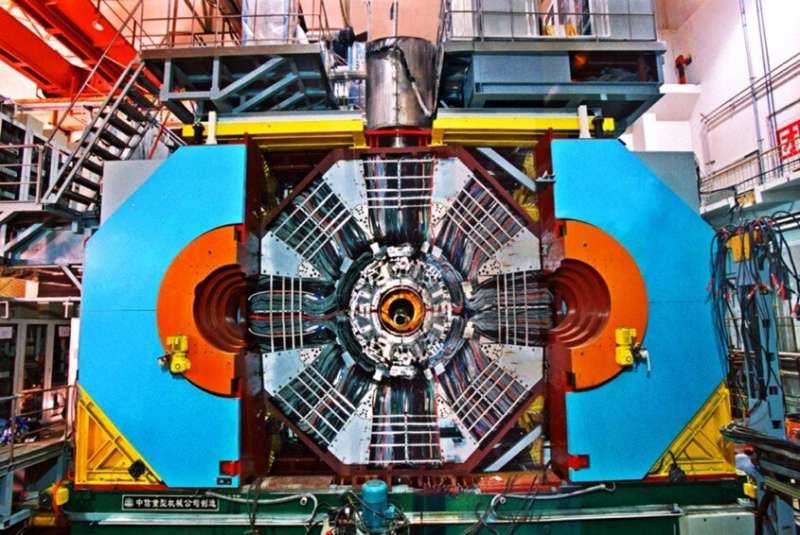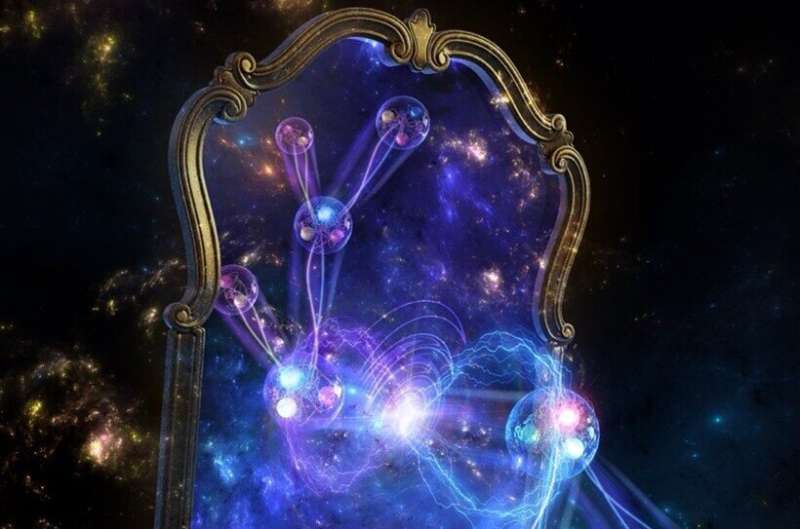Probing conjugation and parity symmetry with entangled double-strange baryons

The Beijing Spectrometer (BESIII) Collaboration has reported a new method for probing differences between matter and antimatter with extreme sensitivity. Results were published in Nature on June 2.
In particle physics, every kind of particle has a corresponding antiparticle. The standard Big Bang theory tells us that the Universe should have had the same amount of matter and antimatter at the beginning. However, all the available data point to the fact that the observable Universe is predominantly composed of baryons rather than antibaryons, which has puzzled the scientific community for more than half a century. Do matter and antimatter follow different laws of physics?
Nowadays, physicists believe that to explain the dynamic origin of baryon-antibaryon asymmetry the laws of physics must accommodate processes that violate charge conjugation and parity (CP) symmetry. In short, CP symmetry means that particles and antiparticles follow the same laws. For example, the decay patterns of particles and antiparticles should be the same. To explain baryon-antibaryon asymmetry, CP symmetry has to be violated to a larger amount than predicted by the hitherto immensely successful Standard Model of particle physics.
Researchers at the BESIII collaboration have exploited strange baryons to shed light on CP violation. The strange baryons consist of three quarks, just like protons, but contain one or more heavier and unstable strange quarks. By observing the decay of the strange quark, the spin orientation of the baryon can be determined.

At BESIII, systems of double-strange baryon-antibaryon pairs are created in electron annihilations with positrons. The new results show that the baryon-antibaryon pairs that are produced have a preferred direction.
Moreover, the spin direction of the baryon and antibaryon are correlated, due to quantum entanglement. Studying angular distributions of the decay products of such systems allows for a separation of the contribution from CP-violating processes that are described by the nonzero value of the so-called weak phase. This phase had never been directly measured until this result by BESIII as described in the Nature article.
Although no sign of CP violation was observed in the analyzed data sample, this experimental method can be applied to larger data sets collected at BESIII or at future facilities. The researchers hoped to observe a CP violation signal of a size that either confirms or rules out Standard Model predictions.
The BESIII experiment is hosted by the Institute of High Energy Physics of the Chinese Academy of Sciences located in Beijing, China and was initiated in 2009. BESIII is an international collaboration consisting of approximately 500 physicists from 17 different countries in Asia, Europe and the Americas.
More information: The BESIII Collaboration, Probing CP symmetry and weak phases with entangled double-strange baryons, Nature (2022). DOI: 10.1038/s41586-022-04624-1
Journal information: Nature
Provided by Chinese Academy of Sciences




















